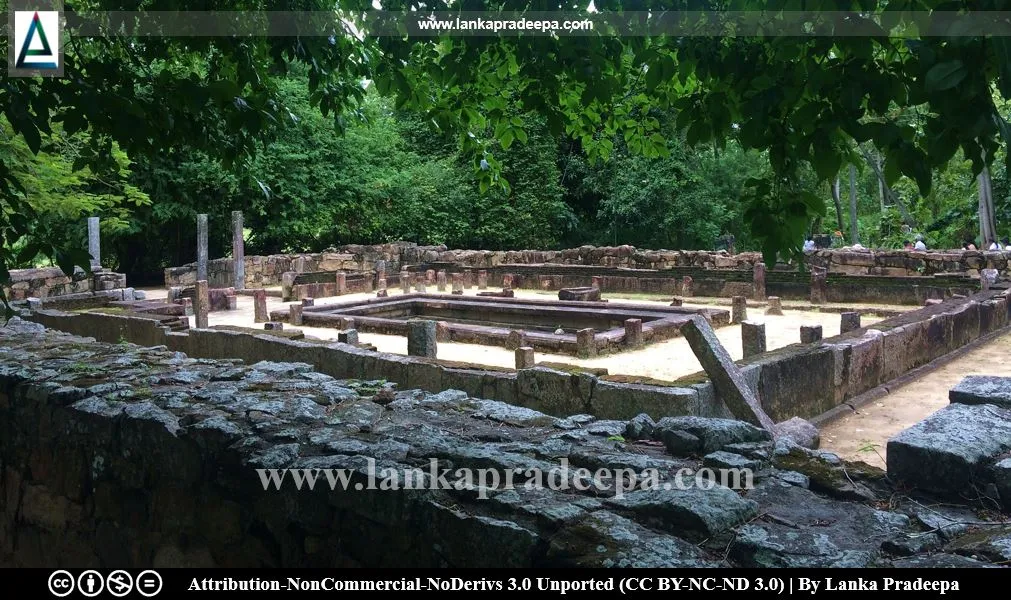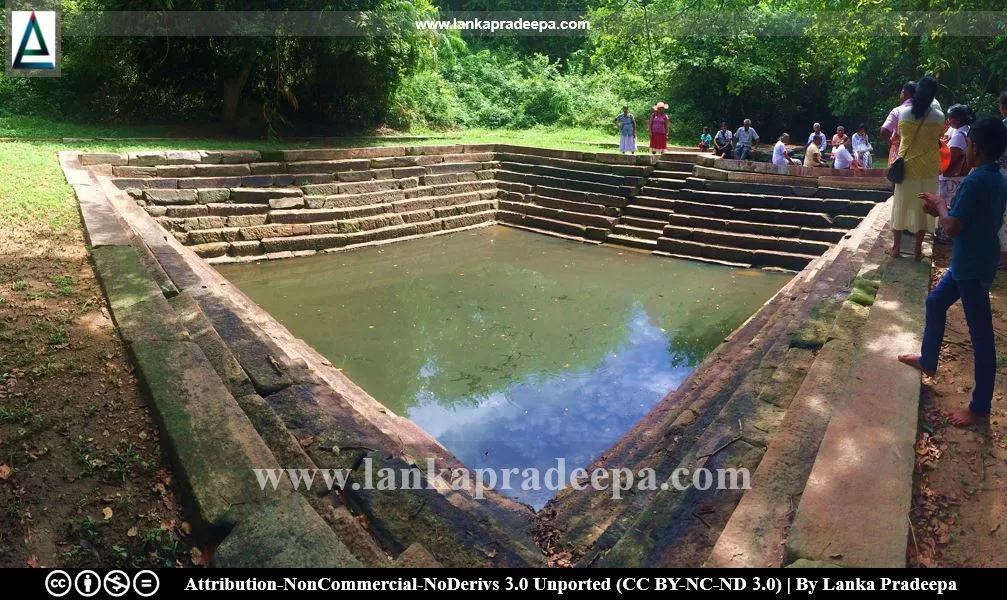
Arankele (Sinhala: අරංකැලේ/අරන්කැලේ පුරාවිද්යා ස්ථානය) is a ruined forest monastery located in Kurunegala District, Sri Lanka. Presently, the site is a declared archaeological reserve.
History
The exact history of Arankele is not known yet as there are no written sources that reveal the establishment of this monastery. However, the origin of this monastery is thought to belong to the early Anuradhapura Period. The architecture of the remaining buildings and structures indicates that they belong to a period between 8-10 centuries A.D.
The history of this place, according to some, is connected with King Mahasena who reigned in Anuradhapura during the period of 275-301 A.D. The chronicle Mahawamsa states that King Mahasena who once came to see the construction works of Kimbulvana Oya had seen a picturesque site near the Dolukanda area and had ordered his men to construct a new Buddhist monastery there (Anulawathi, 2015). Some believe that the monastery which is mentioned in the Mahawamsa could be the one presently known as Arankele (Anulawathi, 2015).
It is also believed that the monastery was probably functioning during the Gampola Period (1341-1412 A.D.).
Nomenclature
The name "Arankele" is said to be evolved from the combination of two words: "Aran" and "Kele". The word Aran is thought to be either derived from "Arahat" (meaning Arhat) or "Arama" (meaning monastery) and the word "Kele" gives the meaning of "the forest".
Archaeological monuments
The site is dotted with a large number of buildings and structures including caves, Padhanagharas, Janthagharas, promenades, ponds, monks' dwellings, Bodhigharas etc.
Caves
Several natural caves on the eastern slope of Arankele mountain (known as Dumkanda mountain) have been utilized from the 3rd century B.C. to the 1st century A.D. to accommodate Buddhist monks. Among them, the cave house known as "Maliyadeva Lena" is considered special (Anulawathi, 2015).
Padhanaghara
During the latter part of the Anuradhapura period, Padhanagharas became popular and were built in several places in Sri Lanka such as Ritigala, Batahirarama, and Veherabendigala. Built in the style of double-platform monasteries, Padhanagharas accommodated the Buddhist monks who devoted themselves to meditation.
Janthagharaya
A large Janthaghara building which was used for hot baths, saunas, and medicinal baths is found in the Arankele monastery complex (Anulawathi, 2015; Anuradha & Kumari, 2015). The hearths used for boiling water and grinding stones for the making of medicinal pastes from herbs are still visible inside the building.
Chankamanagharaya
The ruined structure which is about 16.7 m in length and 4.1 m in width is known as Chankamanagharaya and has been built sheltering a promenade (Anulawathi, 2015). A sanitary building comprising of a urinal, toilet, and washroom is located in the vicinity of the building.






.
References
1) Anulawathi, K. M., 2015. Aithihasika Arankele (A leaflet in Sinhala). Divisional Archaeological office, Panduwasnuwara.
2) Anuradha, R.K.S.; Kumari, A.S., 2015. Pauranika Sthana Saha Smaraka: Kurunegala Distrikkaya (In Sinhala). Department of Archaeology (Sri Lanka). ISBN: 955-9159-37-2. pp.35-38.
2) Anuradha, R.K.S.; Kumari, A.S., 2015. Pauranika Sthana Saha Smaraka: Kurunegala Distrikkaya (In Sinhala). Department of Archaeology (Sri Lanka). ISBN: 955-9159-37-2. pp.35-38.
Location Map
This page was last updated on 27 May 2023


